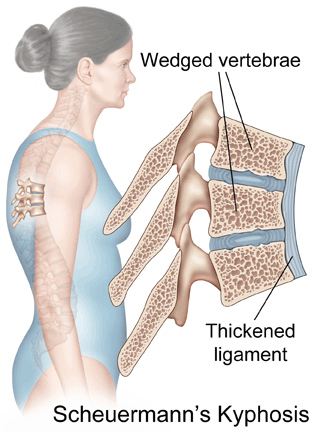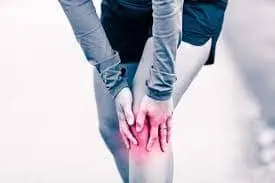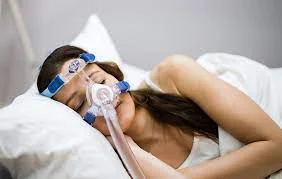Precordial Catch Syndrome: Heart Pain That Is Not Your Heart
Table of Contents
Definition
Precordial catch syndrome (Texidor’s Twinge) is a non-serious disease in which there are sharp stabbing pains in the chest. It is usual, but not identified cause of benign chest pain in children and adolescents. The pathophysiology of the syndrome is exactly not known.
What Is Precordial Catch Syndrome?
- Precordial catch syndrome (PCS), also known as Texidor’s twinge, is a condition that suddenly started, sharp pains in the chest or ribs.
- The condition is known as precordial catch syndrome because the word “precordial” tends to be “in front of the heart”, which is most frequently where the pain is felt.
- PCS usually happens in children and young adults who are otherwise healthy.
- Babies experiencing PCS can describe the pain as sharp, stabbing, or needle-like.
- The pain can happen suddenly when the baby is resting or still, and it may feel worse if they take deep breaths.
- It generally comes and goes rapidly, lasting no more than a few minutes at a time.
- The pain is frequently localized in the left side of the chest, just below the left nipple (near the heart), though it can happen in other parts of the chest or ribs.
- The exact cause of PCS is mostly unidentified or undiagnosed, as there are no symptoms other than pain.
- Fortunately, there are no complications or long-lasting health effects of PCS.
Epidemiology/Etiology
- Precordial catch syndrome can happen at any age but generally happens in children aged six to twelve years.
- There is no sex predilection.
- The pain generally happens at the time the patient is at rest, but never happens at the time of sleep.
- It has no temporal correlation with meals. The exact cause of this condition is mostly unknown.
Signs and symptoms of Precordial Catch Syndrome
- The pain is generally onset and sharp and generalizes to one intercostal space along the left lower sternal border or to the cardiac apex.
- The origin of the pain is not exactly known.
- The pain happens either at rest or at the time of mild activity and is exacerbated with inspiration which frequently leads to shallow breathing in an effort to improve pain.
- The episodes generally last in the middle of thirty seconds and three minutes but occasionally they resolve after a breath or 2 and rarely can last up to thirty minutes.
- There are no connected symptoms and the physical examination is negative.
Symptoms not connected with PCS
- The pain from PCS does not cause tenderness in the part of the chest and does not spread to other areas of the chest, as would take place in the case of a heart attack.
- Individuals who have PCS do not show other symptoms such as paleness or flushing of the skin.
- PCS does not cause wheezing, or any deterioration in pulse.
- Because PCS frequently leads to shallow breathing (as taking deep breaths becomes painful), a person can experience some lightheadedness as an indirect side effect—but PCS does not cause lightheadedness or dizziness directly.
Differential Diagnosis
- Angina pectoris may happen in individuals with congenital, inflammatory, or atherosclerotic causes of coronary insufficiency, aortic valve stenosis, and hypertrophic cardiomyopathy.
- This pain is infrequently described as sharp, is not well localized, tends to start and resolve insidiously, and is provoked by exercise or activity.
- Mitral valve prolapse traditionally causes atypical chest pain, which can be sharp and well-localized.
- However, this pain is not aggravated with deep breaths and is accompanied by the click and murmur characteristic of this condition.
- The chest pain caused by pericarditis is connected with acute illness and is not transient, intermittent, or well-localized.
- Viral pleuritis or pleurodynia can generate sharp chest pain similar in character to precordial catch syndrome, but it is generally connected with fever and cough and is usually unrelenting.
- Chest wall syndrome and chest trauma, involving rib fractures, may generate pain very similar to precordial catch syndrome.
- A history of trauma and localized tenderness of the chest wall exists.
Diagnostic Procedures
- The diagnostic evaluation for precordial catch syndrome should include almost exclusively a careful history-taking and physical examination.
- Plain radiographs are suggested for all people who got pain thought to be emanating from the chest wall, to find out occult bony disorders.
- If trauma exists, radionuclide bone scanning should be suggested to exclude occult fractures of the ribs or sternum.
- Given the location of the pain, an electrocardiogram and an echocardiogram are suggested, but in patients with precordial catch syndrome, the outcome is expected to be normal.
- Depending on the patient’s clinical presentation additional testing can be suggested (blood count, prostate-specific antigen level, erythrocyte sedimentation rate, and antinuclear antibody testing).
- Magnetic resonance imaging of the joints is suggested if there is joint instability.
Medical Treatment in Precordial Catch Syndrome
- Pharmacologic treatment is not suggested, given the quick onset and offset of the pain.
PCS in Adults vs. Children
- Although PCS may happen at any age, it most usually takes place in the middle of 6-12 years of age.
- It is not unusual in teenagers and young adults, but it becomes far less usual after the age of twenty. However, adults may feel PCS.
What Causes a Child to Develop PCS?
- Researchers are still unsure of any direct causes of PCS.
- Some studies have indicated that growth spurts can improve the likelihood of PCS, or that it can be connected with the nerves that line the chest wall.
- The pain mostly increases when a child breathes in while at rest (sitting or lying down), slouching, or bending over.
- It does not occur while sleeping, and there is no clear trigger that causes the pain to start.
- Some doctors believe it can be more likely after a chest injury.
Is There a Link Between PCS and Anxiety?
- PCS is not physically linked to anxiety, but experiencing the onset, sharp pains of PCS can cause some children or teenagers to feel anxious.
- Because it carries on rapidly and the pain may be extremely sharp, it can cause a child or teenager to feel anxious that they are experiencing a more serious condition, like a heart attack.
- While the child can be alarmed by the onset intensity of the pain, PCS is not connected with a heart attack, lung disease, or another major medical emergency.
- The sharp pain may experience severe, specifically when breathing deeply, but it will resolve on its own within some time.
- Furthermore, because the nature of the pain frequently makes it hurt to take deep breaths, the child can start taking shallow, rapid breaths in an attempt to reduce the pain.
- Shallow breathing is connected with feelings of anxiety in the body and may lead the child to experience lightheaded, which can fuel their anxieties.
Physical Therapy treatment
Treatment of precordial catch syndrome is made up of a combination of reassurance and instructing the patient to take a deep breath as soon as the pain begins.
Reassurance:
- Explain that chest pain is a usual complaint among children and, unlike in adults, it is seldom cardiac in origin.
- A more specific discussion of the person’s symptoms and the features (sharpness, localization, relation to deep breathing, predominance at rest) that clearly identified this condition from cardiac pain is necessary.
- Showing the symptoms (precordial catch syndrome ) highlights certainty and familiarity with the diagnosis.
- Reassurance must be given that the pain is completely harmless.
Treatment is not required usually for PCS, as the pain will relieve on its own over time and does not have lasting health effects. There are some things a person may do at home to help ease the pain when it happens, specifically for children.
Encourage slow breathing:
- For some individuals, taking a slow, deep breath (although painful at the moment) causes the pain to stop afterward. This does not work for everyone, so if the child won’t take deep breaths, a person may instead have them focus on taking gentle and small breaths.
Help them sit up:
- Try having the child relax and change their posture from a slouching or bent position to sitting upright or standing straight up.
- Motivating the child to practice good posture, sitting up tall with shoulders back, can help to prevent PCS from happening again.
Try medication:
- If a child or adolescent is experiencing PCS somewhat daily, the doctor can suggest anti-inflammatory medicine to help reduce the pain at the moment.
- Person may get over-the-counter (OTC) anti-inflammatory drugs at the local pharmacy.
Ease their fears:
- It can also help to reassure the child that this condition is harmless and will go away soon.
- This may help to reduce anxiety and allow the child to relax, which can permit the pain to resolve sooner.
FAQ
The telltale symptom of precordial catch syndrome is a sharp pain in the left side of the chest near the heart. A person can be able to pinpoint the pain to one tiny area. It won’t radiate to other parts of the body, like it may if it were a heart attack.
Precordial catch syndrome (PCS) is a usual cause of chest pain complaints in children and adolescents. It also happens, though less often, in adults. PCS episodes most frequently happen at rest, while sitting or lying down, or during a sudden change in posture.
Breast pain that is described as burning, stabbing, and/or sharp, can be because of fibroadenomas, breast cysts, infection of the breast (mastitis), or breast abscesses. Pain under the breast could be connected to persistent moisture and irritation in the skin fold, which is called intertrigo.
Some of the most usual causes involve hormonal changes, an ill-fitting bra, or muscle strain. Most of the time, breast and armpit pain is not serious. A person may take steps to treat it at home by taking pain-relieving medications, applying a Hot and cold pack, and wearing a supportive bra.
Experts believe that precordial catch syndrome happens when nerves in the inner lining of the chest wall are pinched or irritated, possibly the ribs, cartilage, or the lining of the lung, known as the pleura. Frequently, it starts when people are at rest and especially if people are slouched over or have bad posture.







